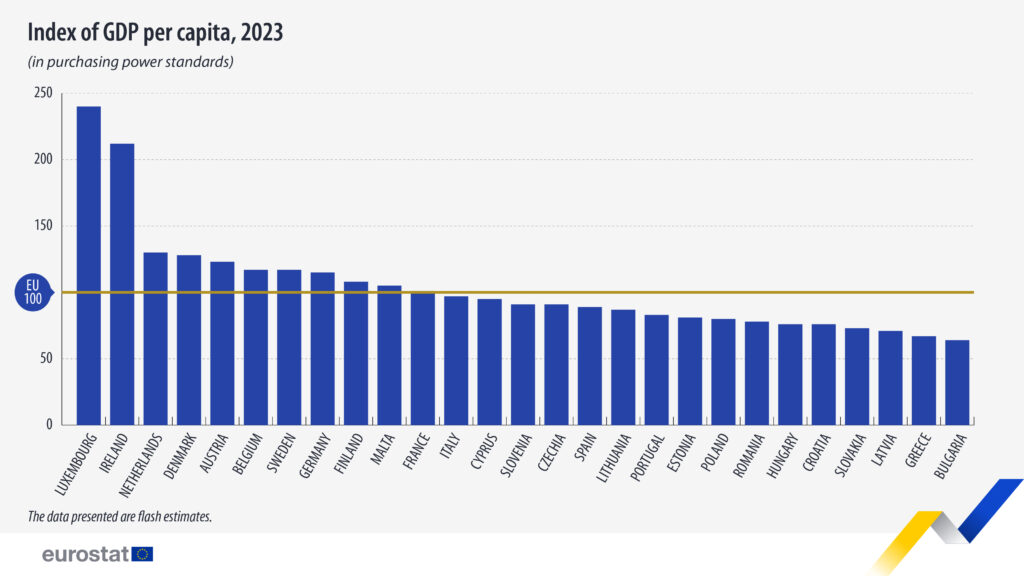
Romania overtakes Hungary on PPP
Romanians have been consuming more than Hungarians, Budapest-based business website Portfolio writes, and now it has become clear why: wages were already higher in Romania than in Hungary last year.
“Regarding purchasing power parity (PPP), 2023 was the first year when the wages of our eastern neighbour came before us,” the Hungarian website adds, citing newly published data from the official EU statistics agency Eurostat.
Poland has by far the highest salaries of any country in the region, Portflio notes, adding that while salaries are rising in every country, Romania has seen the fastest growth. In the last ten years, the difference between Romanian PPP and Hungarian PPP has fallen almost continuously, and has now eventually disappeared completely.

Net wage calculated at PPP
In the case of households without children, the Romanian wage catch-up was more dynamic, and the catch-up also took place with slightly greater momentum.
After years of closing in on Hungary’s GDP per capita, Romania’s GDP overtook it last year, and Bulgarian consumption could reach Hungary’s level within a year or two. Given Hungary’s current wage levels, consumption could be higher, as Romanian salaries are not much higher than Hungarian ones. However, decision-makers in Hungary focus on investment while other countries prioritise consumption.
Overall, it seems that Hungary has not moved towards countries characterized by high wage levels, in terms of per capita consumption, with only Bulgaria is ahead of it. Hungary continues to compete with low wages – along with a depreciating currency – which leads to a relatively slower economic catch-up than its investment in human capital.
The total average hourly wage cost in Hungary of EUR 13, including taxes and contributions, is one of the EU’s lowest, which remains an attraction for companies that focus on cheap labour rather than high skills and high added value.

Based on the above, Portfolio wrotes, Hungary is not keeping pace with the region, and the deterioration of its relative position is a trend.
The Hungarian Central Bank recently wrote: “As a result of deficiencies in balance and competitiveness, the Hungarian economy was more sensitive to external influences than other countries in the region. The MNB added Hungary will be a laggard in the next decade in the key areas of knowledge capital, digitalisation and green energy, and will not reach the regional average without large-scale reforms.
Portfolio writes: “Who cares about GDP? How did Romania overtake Hungary? This is just a silly economic indicator that cannot be grasped by the average person. Let’s look at wages instead, because that’s what people are interested in, because the wages in Hungary are higher than in Romania, right?
“Unfortunately, not anymore. The Romanians were also ahead in price-adjusted wages last year. In other words, Romanians – now based on all indicators – have more purchasing power than Hungarians.”





